Learn how to make mashed potatoes perfectly every time by following these simple and easy-to-master instructions. I'll include recipes, add-ins, and some fantastic tips and tricks. You'll never want to make mashed potatoes another way again.

Jump to:
Mashed potatoes might seem like an incredibly simple dish, but there are some tips to use to make them extra delicious. This simple guide will show you everything that you need to know.
🥔 Choosing The Right Potatoes
While there are a lot of varieties of potatoes out there, there are really only 2 kinds that will yield the best possible mashed potatoes. These would be either Yukon Gold potatoes or Russet potatoes.
Essentially, Yukon Gold potatoes have a medium starch content, which makes them creamy in consistency. The potatoes themselves also have a slight buttery flavor.
Russets, on the other hand, have a higher starch content, which creates ultra-fluffy mash. The flavor is milder and not quite as rich in flavor as Yukon Golds.
So, whether you want your potatoes to be creamier or fluffier will decide whether you want to use Russets or Yukon Golds. Of course, you could always use a combination of both of them!
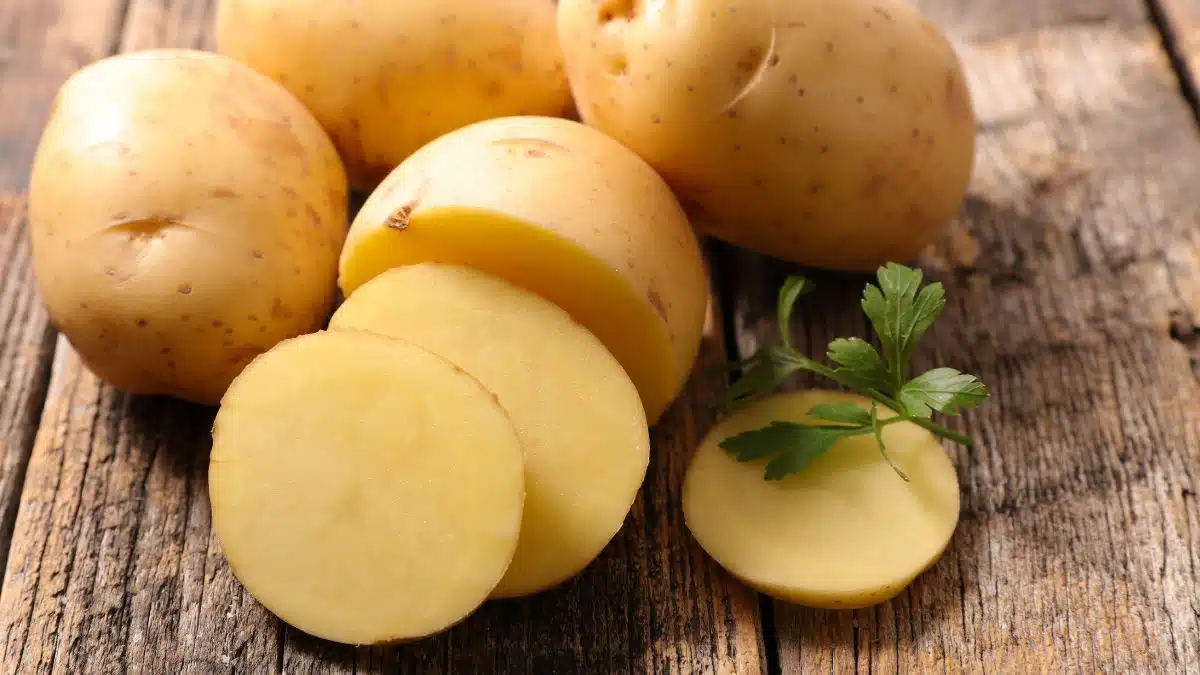
I have an entire potato guide if you would like to learn more about the different varieties of potatoes and their best uses!
🥘 Mashed Potatoes Ingredients, Notes, & Substitutions
You could always boil potatoes in water, drain them, and then mash them up. However, those wouldn't be very tasty, would they? You need a few other ingredients to really make them delicious!
Basic Mashed Potatoes Ingredients
- Potatoes - Of course, you'll need some potatoes! Choose Russets, Yukon Golds, or a combination of the two for the best-mashed potatoes out there.
- Milk or Heavy Cream - If you are making basic mashed potatoes, opt for heavy cream or half & half instead of just regular milk. If you are making a special variety of mashed potatoes (like my cream cheese mashed potatoes), regular milk will work just fine since there is the addition of cream cheese.
- Water - You'll need some water for boiling your potatoes. However, you can enhance the flavor by boiling them in chicken broth!
- Butter - Butter is the fat needed to make these potatoes extra rich and flavorful! I strongly recommend using real butter and not a butter substitute. You'll want this to be at room temperature.
- Salt & Pepper - Use salt and pepper to taste to give some flavor to your potatoes.
Be sure to see the free printable recipe card below for ingredients, exact amounts & instructions with tips!
Optional Add In Ingredients
There are so many different delicious add-ins or twists that you can make from your classic mashed potatoes! Here are some great options!
- Bacon - Who doesn't love bacon? Cook as much as you like, crumble it up, and add it to your potatoes like in my bacon cream cheese mashed potatoes.
- Cream Cheese - Grab some full-fat cream cheese to make your potatoes richer!
- Chives - Chives are another wonderfully tasty complement to potatoes!
- Seasonings - In addition to salt and pepper, you could add garlic powder, onion powder, or any of your favorite herbs or spices.
Peel vs. No Peel
Whether or not you want to keep the skin on your potatoes or peel them first is entirely up to you! It could be a strong personal preference or depend on the day.
Either way, you can enjoy delicious mashed potatoes! I will say, however, that it is easier to press your potatoes through a potato ricer if they have been peeled.
Milk vs. Cream For Mashed Potatoes
Many mashed potato recipes call for milk. However, one of the simplest ways to enhance your potatoes is by swapping this out for heavy cream!
This addition will make your mashed potatoes creamier and richer in flavor. As previously mentioned, however, you can use regular milk if adding cream cheese.
If you have dairy sensitivity, you can always make mashed potatoes without milk and butter! Simply reserve some of the starch water from boiling the potatoes to add back into them for mashing.
Adding Egg To Mashed Potatoes
If you've never heard of adding egg yolks to mashed potatoes, you aren't alone. Egg yolks act as an emulsifier and make the mashed potatoes as creamy and smooth as possible.
Not to mention, they make them have a richer flavor, and they won't taste like eggs at all. Take a look at my post about adding eggs to mashed potatoes if you want to learn more.
The special thing about adding egg yolks to mashed potatoes is that you don't need a different recipe. Simply prepare your potatoes as intended, and then add the egg yolk at the very end while stirring quickly.
The heat from the potatoes will cook the egg, and that's it!
🥣 Equipment Needed
Of course, you'll need a knife and cutting board for cutting your potatoes and a pot to boil them in. However, the really important decision comes down to what you choose to mash them!
There are a few different options available, and they do make a difference!

- Potato Ricer: A potato ricer is my personal favorite tool for mashing potatoes. You place the cooked potato into the ricer and press it through, creating an extra fluffy and even texture.
- Potato Masher: This common tool is very simple. You only press it down into the cooked potatoes to mash them. You could make your potatoes as chunky or smooth as you like!
- Fork: If you don't have a potato masher or potato ricer, you can always use a fork! It's easy to do, and everyone has one!
You should never use a blender or food processor to mash potatoes as it is too rough. This will result in your potatoes being gummy. Mash them by hand instead.
🔪 How To Make Mashed Potatoes
Making mashed potatoes is a pretty easy task. Just follow some extra tips to ensure that they turn out amazing!
Step 1: Prepare your potatoes. Clean and scrub your potatoes, and then peel them if desired. Then, cut them into large chunks that are equal in size.
Step 2: Boil. Place your potatoes into a large Dutch oven or pot, and then add enough cold water (or chicken broth for more flavor) to cover the potatoes by about 1 inch. Generously season your water with salt. Bring to a boil and then cook, uncovered, until your potatoes are fork-tender. Read my guide on how long to boil potatoes here. Drain the potatoes.
Step 3: Scald. Add your heavy cream (or milk) to a small saucepan and bring it up to a simmer. Take a look at my post on how to quickly scald milk for mashed potatoes.
Step 4: Mash. While waiting for your cream to boil, you can go ahead and press your potatoes through a potato ricer (or mash them using your preferred tool).
Step 5: Combine. As soon as your cream is scalding, add ⅓ portion of the hot cream to your potatoes and ⅓ portion of your room temperature butter. Mix this into the potatoes until combined, and then repeat this process until you have added all of the cream and butter and the butter has melted. Add as much cream as needed so that your potatoes are at your desired consistency.
Step 6: Additions. Add any other mix-ins you might have, such as seasonings or bacon. Then, serve immediately.
Instant Pot Mashed Potatoes
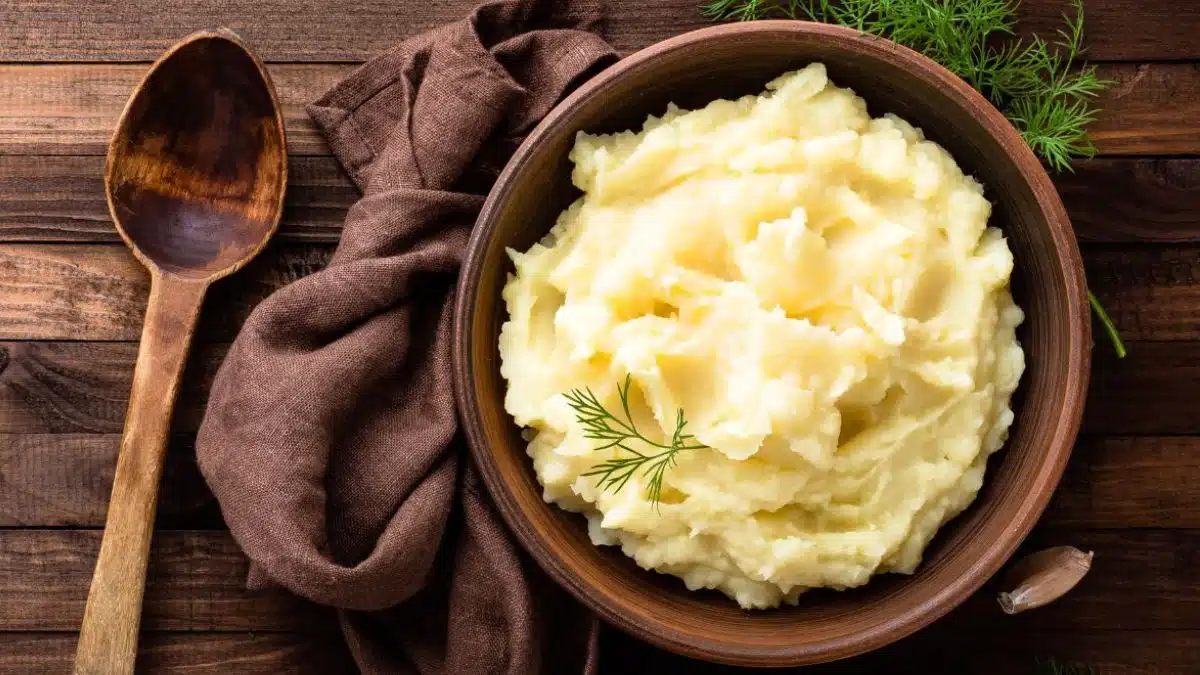
If you don't want to deal with boiling a pot of water on the stovetop, you can always make your mashed potatoes in a pressure cooker! Check out my recipe for Instant Pot mashed potatoes here!
💭 Tips For Making Mashed Potatoes
- Cut your potatoes into large cubes that are approximately the same size. This will cause them to cook evenly, and the larger size will prevent them from absorbing too much water.
- Adding cold water to your potatoes (rather than adding the potatoes to already-boiling water) helps them cook evenly. If you placed them into boiling water, the outsides would cook too quickly while the insides would still be underdone.
- Use 1 tablespoon of salt per pound of potatoes in your water for boiling. This pre-seasons them and helps them to be more flavorful.
- You'll want all ingredients to be at room temperature before adding them to your potatoes (such as butter or cream cheese). This helps them to thoroughly combine and become properly absorbed by the potatoes.
>>>See All Of My Tasty Recipes Here!<<<
🥄 Make Ahead Options
You can easily prepare your mashed potatoes up to 2 days before you actually need them. Just make sure to store them in an airtight container in the fridge until you are ready to reheat them.
Freezing
You can freeze the entire batch or freeze them in individual portions.
Simply place them (either portioned or the entire batch) into a freezer-safe bag or container. They can be frozen for up to 2 months.
You can reheat them straight from frozen on the stovetop or let them thaw in the fridge overnight before reheating. My post on how to freeze mashed potatoes has tons of information!
Leftovers
You can use your leftovers as a typical side dish or use them to make mashed potato casserole or potato croquettes!
🥡 Storing Mashed Potatoes
If you happen to have any leftovers, you can always store them for later. To do so, let them cool completely to room temperature.
Then, place the potatoes into a storage bag or container and squeeze out any excess air. Store your mashed potatoes in the refrigerator for up to 5 days.
Reheating
The best way to reheat is by placing them into a pot over low heat. Place the lid onto the pot and stir occasionally as the potatoes heat through.
If needed, you can add a splash of milk or cream to thin them out. Take a look at my guide to reheating mashed potatoes for tons of tips and other methods.
Now you know how to make mashed potatoes! Were your favorite tips on the list? Leave a comment down below and let me know!
Do you love a recipe you tried? Please leave a 5-star 🌟rating in the recipe card below and/or a review in the comments section further down the page.
Stay in touch with me through social media @ Pinterest, Facebook, Instagram, or Twitter! Subscribe to the newsletter today (no spam, I promise)! Don't forget to tag me when you try one of my recipes!
📖 Recipe Card
How To Make Mashed Potatoes: Cream Cheese Mashed Potatoes (+More Recipes!)
Ingredients
- 5 lbs yellow potatoes (peeled, washed, and quartered)
- ½ cup milk (or more as needed)
- 8 oz cream cheese (softened, at room temperature)
- ½ cup butter (softened, at room temperature)
- 1 teaspoon salt (plus more for the water)
- 1 teaspoon garlic powder
- ½ teaspoon ground black pepper
(Note: 2x or 3x only changes the ingredient list)
Instructions
- Add the quartered 5 lbs yellow potatoes to a large stockpot and cover them with 1-2 inches of cold water. Generously season the water with salt.
- Bring the water to a light boil and cook for 20-25 minutes, or until the potatoes can easily be pierced with a fork. Remove from the heat and drain the potatoes.
- Add ½ cup milk to a small saucepan and bring it up to a boil, stirring frequently.
- As you are waiting for the milk to boil, press your potatoes using a potato ricer.
- Add the scalded milk, 8 oz cream cheese, ½ cup butter, 1 teaspoon salt, 1 teaspoon garlic powder, and ½ teaspoon ground black pepper to the potatoes and gently mash it all together.
- Serve immediately while hot.
Notes
- You don't have to peel the potatoes if you don't want to, but they are much easier to press through the potato ricer without the skin.
- Salting the water used to cook the potatoes adds a ton of flavor! You'll want to add 1 tablespoon of salt per pound of potatoes.
- Start off with ½ cup of milk and then add more if you would like to thin out the mashed potatoes.
- Take a look at my guide on scalding milk for mashed potatoes if you want to learn more.
- Always use a fork, potato masher, or potato ricer to mash up your potatoes. Anything electric (such as a blender or food processor) will make the potatoes have a gummy texture.
- Let your mashed potatoes cool completely, and then store them in the fridge for up to 4 days.
- Portion your mashed potatoes into single servings and then freeze them for up to 2 months. Take a look at my post which is all about freezing mashed potatoes for more information.
- Reheat the cream cheese mashed potatoes over low heat on the stovetop. For more methods and tips, check out my guide on the best methods for reheating mashed potatoes.

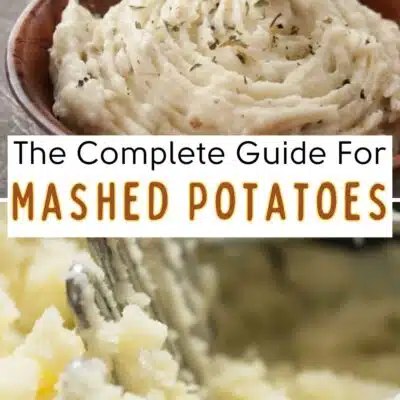
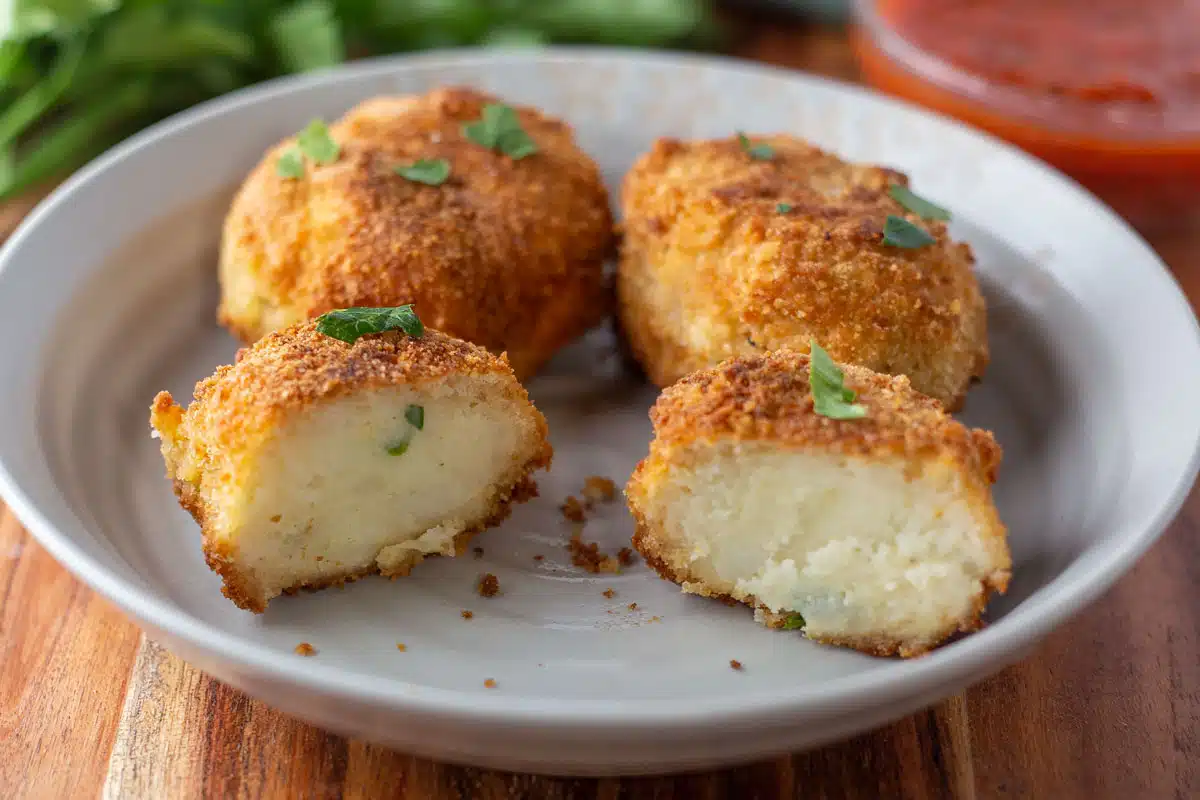
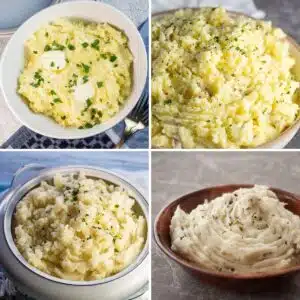
Comments
No Comments